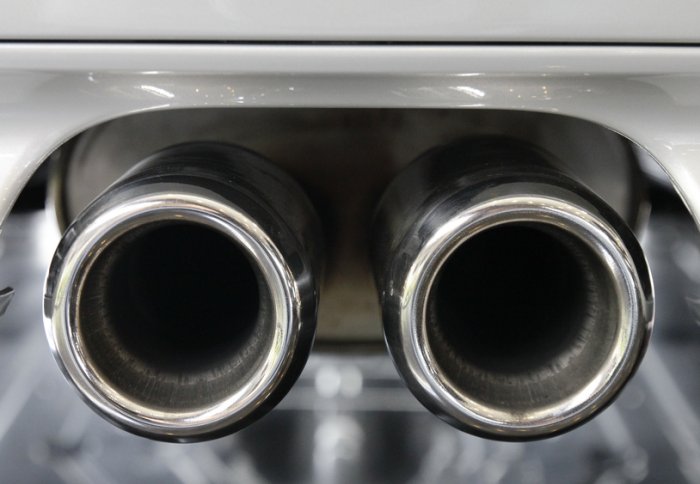

A new catalytic converter that could cut fuel consumption and manufacturing costs has been designed by a scientist from Imperial College London.
A catalytic converter is the component in a vehicle’s exhaust system that eliminates some harmful emissions. Tests suggest that the new prototype could reduce fuel consumption in a standard vehicle by up to three per cent. It could also deliver environmental benefits by reducing the amount of CO2 that each vehicle emits.
The prototype I have developed could make cars cheaper to run because they use less fuel.
– Dr Benjamin Kingsbury
Inventor and Research Associate in the Department of Chemical Engineering
The new design uses up to 80 per cent less rare metal, a development that could significantly reduce costs for vehicle manufacturers. Catalytic converters are expensive to manufacture because they use precious metals such as platinum to eliminate emissions. These metals currently account for up to 60 to 70 per cent of the cost of the component.
The prototype is also predicted to perform better than existing models because the rare metal degrades less over the lifetime of the component. Laboratory tests suggest that it deteriorates by only four per cent over a distance of 100,000 kilometres, compared to 35 per cent for a standard catalytic converter.
The prototype device was developed by Dr Benjamin Kingsbury, Professor Kang Li and Dr Zhentao Wu who are all from the Department of Chemical Engineering.
Dr Kingsbury says: “Catalytic converters are the most important component in a vehicle for controlling exhaust emissions. Yet their design has not changed since they were first developed in the 1940s. The prototype I have developed could make cars cheaper to run because they use less fuel. It could potentially help manufacturers to reduce their costs. Drivers could also be a major beneficiary of this device, which could save on fuel costs and ultimately lead to reduced CO2 emissions.”
A conventional catalytic converter is a ceramic block, which is honeycombed with microscopic channels that are coated in a rare metal such as platinum. Emissions travel from the engine to the exhaust system and through the channels, where the precious metal causes a chemical reaction to occur that eliminates the harmful pollutants.
The researchers have advanced an existing manufacturing process to improve the structure of the microscopic channels, increasing the surface area and enabling the rare metal in the device to be distributed more effectively so that less metal is used. The increased surface area also makes the catalytic converter’s chemical reaction process more efficient.
The new design of the device increases fuel efficiency because it prevents ‘back pressure’, which is a build up of gases that can make the engine work harder, affecting its performance.
Dr Kingsbury has been awarded funding from the Royal Academy of Engineering to take his prototype to the marketplace. Dr Kingsbury and his partners worked with Imperial Innovations to establish an Imperial start-up company in December 2013 to market the prototype device. A key next step is to develop a production process for mass manufacture.
Article text (excluding photos or graphics) available under an Attribution-NonCommercial-ShareAlike Creative Commons license.
Photos and graphics subject to third party copyright used with permission or © Imperial College London.
Reporter
Colin Smith
Communications and Public Affairs

Contact details
Email: press.office@imperial.ac.uk
Show all stories by this author
Leave a comment
Your comment may be published, displaying your name as you provide it, unless you request otherwise. Your contact details will never be published.



Comments
Comments are loading...